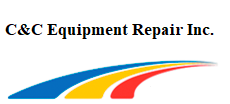We do service for all makes and models of DPF/DOC/SCR filters, including all diesel engine equipment: buses, light, medium and heavy duty trucks, construction equipment, diesel generators, diesel cars and boats.
We clean Diesel Particulate filters more thoroughly than ever before. This is the only Diesel Particulate Filter cleaning system on the market that has extreme suction on the outlet side as well as pinpoint accuracy of forced air through the inlet side. We can ensure you to get the filter cleaned and inspected so you can save better mileage. 
A semi truck is a major investment for any trucking business or an owner operator. These trucks are powerful and intricate pieces of machinery, and they power the modern American economy to an extent that might surprise many people who don’t know too much about them.
Beyond that, however, these vehicles mean a lot more to their drivers than just getting from point A to point B. They’re rolling offices and living quarters as well, and drivers spend far more time in them than just when they’re driving down the highway. For that reason, safety should take priority over everything else when it comes to maintaining a semi. Brakes are a common issue we see truck drivers dealing with, so it is always better to bring in your truck into our shop and we will fix your breaks right the way so you can be on the road again.
Trailer Repair Services That Fit Your Needs
C and C Truck and Trailer Repair is known and trusted for quality repair services on trailers that are fifth wheel and larger (up to semi-trailers). We do work on brakes, DPF Filter cleaning, airbags and springs, landing gear, electrical work, and tires. C and C Truck and Trailer Repair have the experience to deliver quality results on time.
We understand the need for a working fleet. This is why we are committed to assisting fleets of all sizes with their truck and trailer repair and maintenance services.
Maintenance Delivered At Your Convenience.
If you are unable to bring in your truck or trailer to our location, C and C Truck and Trailer Repair team is happy to dispatch a repair team to your location for quality service. Don't forget to bring your trailer to our location in Elk Grove Village.
At C and C Truck and Trailer Repair Fleet Maintenance, we are known for our truck repair services. However, we provide trailer repair and preventative maintenance (PM) options as well






